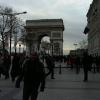I need some help. I am working now on a depropanizer distillation column (NGL - fractionation train), trying to see how the column react on a top stage pressure change.
Here's the control philosophy of the column :
Top Pressure controller : PT0076
38th stage temperature controller: TT0256 cascade loop with hot oil reboiler
Reflux flow controller : FT0024
I don't understand why, when the top pressure increase, Top and bottom temperature (TT0096 and TT0087) increased while the temperature of the 38 Stage, start to decrease ?
You can also see that the Top pressure has not a real influence on the compositions!
An another hand, do you know (any explication) why the differential pressure between middle and bottom increased (flooding) when the top pressure increase ? (usual it's the contrary, no!)
Please find the attached files.
Many thanks in advance.

 FB
FB











